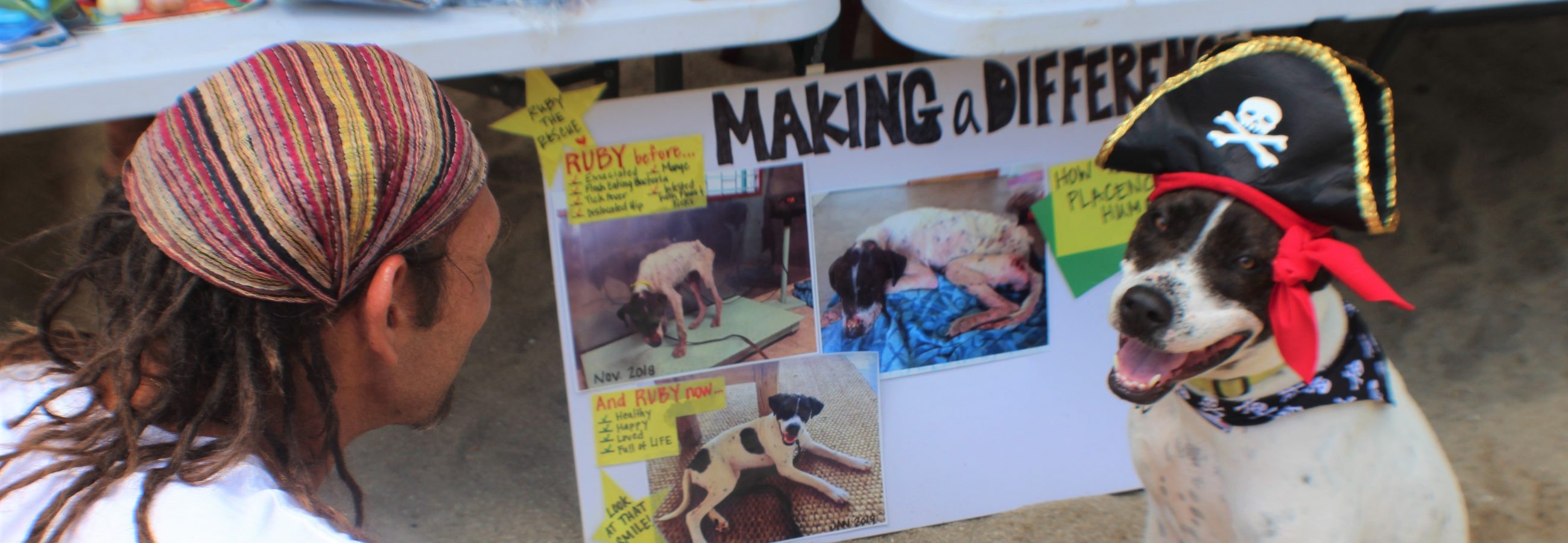Mange
Mange is a continuing source of worry for Placencia dog owners.
Contagious Mange
The most common type of mange in Placencia is “contagious” (sarcoptic) mange. Both dogs AND people can develop contagious mange.
Contagious mange causes terrible itching in dogs, along with skin reddening, hair thinning, oozing sores, and crusts and scabs. Untreated, an infected dog will lose much of its hair and can develop severe bacterial skin infections.
As its name suggests, contagious mange spreads easily from dog to dog and from dogs to people. People can “catch” contagious mange by direct contact with an infected dog, or by sleeping or sitting on furniture, rugs and beds used by an infected dog. (The good news for humans is that the mite that causes contagious mange can only live for a few weeks on human skin, so once the dog’s mange is successfully treated, people mange will disappear on its own.)
Preventing and Treating Contagious Mange. The best way to prevent or limit contagious mange is by keeping a dog clean and well nourished through regular baths (about once every two weeks) and a diet of good-quality dog food. Pet owners should also attempt to limit pet contact with infected dogs.
If a dog does develop contagious mange, the standard form of treatment is two doses of the drug Ivermectin, two weeks apart. Depending on the severity of the mange infection, steroids may be required to relieve the intense itching until the Ivermectin begins to work. If the untreated mange damaged the dog’s skin, frequent medicated baths may be necessary.
Some people also report having successfully treated contagious mange by applying burned motor oil to the dogs skin. Veterinarians do NOT recommend this treatment because dogs can be poisoned by licking the oil (even burned oil) and the burned oil can be very irritating to the dog’s skin.
Inherited Mange
Placencia’s second most common type of mange is “inherited” (or demodectic) mange. Inherited mange is not considered contagious and usually strikes puppies under 12 months old and older dogs with some other disease. (Some purebred dogs may have an inborn susceptibility to demodectic mange). Kittens and cats sometimes develop inherited mange.
Inherited mange is much harder to treat and requires periodic rechecking and skin scrapings by a vet. Antibiotics, benzoyl peroxide-based shampoos, antiparasitic agents and sometimes immune stimulants are often necessary to successfully treat inherited mange.
Diagnosing Mange
Unfortunately, only a vet can tell for certain whether a dog has contagious or inherited mange – – or an entirely different problem such as an autoimmune disease, a flea allergy or contact dermatitis.
So, if you think your dog might have mange – get it to a vet! (See our calender for the next scheduled vet clinic.)
